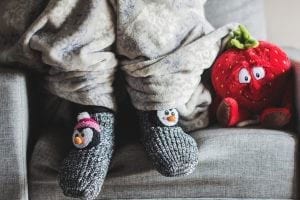This weekend Patient Worthy attended RAREfest, an event being held in the UK by the Cambridge Rare Disease Network to raise awareness and promote discussion around rare disease issues.
The Saturday event was busy, with patients, their families, researchers, professionals, healthcare workers, and the public all coming together. Speakers talked about a range of diverse topics, from personal experiences with rare disorders, to the research being done to improve diagnosis and treatment. There was also a range of exhibits hosted by people and organisations involved in rare disease communities.
More than twenty exhibits took part (you can view the full list here, and these were a couple of our favourites:
Dagmar Bennett and Adam Pearson
Adam Pearson is an actor, producer, and campaigner against stigma for people with a visible facial difference. Adam has Neurofibromatosis Type 1, a rare genetic condition that causes nerve tumours to grow. As a result of the condition, Adam developed excess tissue on his face.
Adam’s friend, an artist called Dagmar Bennett, created a realistic sculpture of Adam’s face and shoulders, which was displayed at RAREfest. To create the work, she studied human anatomy in detail to make the sculpture as realistic as possible. Dagmar says, “I was determined to capture [Adam’s] qualities and show him as an individual.” You can read more about the art and Dagmar’s perspective here, at RAREfest’s website.
Microsoft’s Project Torino
Microsoft’s on-going Project Torino is a creative new way to teach children to code. It’s designed to be used by children who are visually impaired and children who are sighted, so the whole class can learn together.
Often, coding classes use activities like dragging and dropping blocks on a screen to teach children to code, but this can mean that children with visual impairments aren’t able to take part. Microsoft’s project uses physical ‘pods’ that can be connected together to form a type of code, and different codes produce different sounds. The pods have gone through several stages of development, with various improvements being made along the way. For example, the early pods were white, but that was changed after children with limited vision said that more colours would help. By creating a usable, fun programming class, Microsoft is working to enable children with visual impairments and other challenges develop their interest in coding.
Rare Revolution
Rare Revolution Magazine is a publication that is designed to give a voice to patients and charities in the rare disease community. Its CEO, Rebecca Stewart, is also co-founder of the Teddington Trust, a charity that supports those with Xeroderma Pigmentosum, a genetic condition that causes extreme UVR light sensitivity. Rare Revolution magazine is free to subscribe to online, and they publish a new issue each quarter, each with its own theme.








